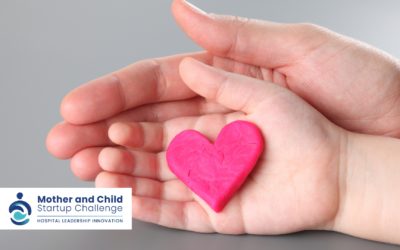I’ve always believed in groups. It’s in groups where important, interesting, and sometimes intriguing topics are discussed. I trusted that there was strength behind them, and looking at how the modern business looks today, I was not wrong.
When we look at the best-performing companies, especially those directing their offer to individual customers, we notice that they all strive to build a community around their products.
Through various activities, they try to attract and keep us as long as possible. Why? To put it bluntly—building a community pays off! In this material, I will tell you why and give you tips on what to remember when you create your own.
To Build a Community Means to Spend Time on It
A lot of time, actually. It won’t happen overnight, just like you won’t make a friend overnight. And often, building such friendly relationships within the community is aimed in this direction.
Looking at various brands, we will see that they are largely addressed to women. For what reason? There are a lot of factors behind this, but the key here seems to be the need to build bonds, to belong. Women, more often than men, admit that they like and want to be part of a group. Of course, that doesn’t mean men do not also.
When we look at groups on Facebook, we will immediately notice how many women’s organizations are there. They allow you to talk, exchange opinions, and share your thoughts. This is how women establish real relationships: by talking. The more intimate and difficult the topics are, the stronger the bond between the women is formed.
The need for bonding is one of the four needs that make the economy work in this way and not in another. It is worth taking it into account when creating your communication campaigns.
How to Build a Community Around the Brand
Observing various communities, I noticed that two models of their design can be distinguished.
The first is based on the personal branding of the leader.
The second gathers others around common topics.
How is the First Model Created?
Here, the first place is taken by the leader. A person who, with charisma, passion, and commitment, convinces others of what they believe, and what is important to them.
Such a person strongly emphasizes their values, and over time begins to gather around themselves people who are similar. Such a person can inspire and educate them.
This model is also associated with our search for a “role model,” someone you can refer to or whose example you can follow. Sometimes such a person is a point of reference – „Yes, I want to be like them!”
You can read about how to work on your personal branding to build a community here and here.
The more reliable, coherent, and interesting a role model seems, the more they will attract others. The disadvantage of such a model of community building is the so-called „human factor.” For one thing, knowing that others look at what a person does and the risk of a setback does not always help. For another thing, you need to sense the moment when it no longer matters who is a leading model in a given project. Suddenly, the project can begin to live its own life and have a chance to survive even without the person behind them.
The next step is to recognize the needs of the emerging community, understanding their motivation and concerns. Then, we are only one small step away from creating a product, i.e., trying to monetize and scale our values.
You can make money from speeches, meetings, and consultations—however, only the scale gives real development opportunities. Look at the influencers. They are not limited to creating materials in their social media channels, but they market products that they first present to the communities they create, and they are usually the first tester and buyer of new products and then become their ambassador. Clothes, books, restaurants, cosmetics, jewelry. There’s a lot of it. The longer I look at it, the more I wonder what makes the product successful.
For me, a brilliant example of such a strategy is Anna Lewandowska, who leads her community like a pro. In the National Court Register, I found information about six companies she is involved in. But she has a lot more products. What is very striking is the consistency and complementarity of what she introduces to the market; here we have snacks, a cafe, a sports center, trips, sports camps, a training app, clothes and accessories for children, and cosmetics. No wonder that in 2021, Wprost magazine valued her assets at 231 million PLN.
It’s safe to assume that her marriage helped her. It certainly gave a completely different start. But there are a lot of well-known soccer players’ wives who have not achieved such business success. In my opinion, they do not build communities around themselves as effectively as Anna does. Her financial results speak for themselves.
The Second Model
The second model of community building does not focus directly on a man who, like the sun, attracts others to orbit him. It’s the topic and issues relevant to the selected group that are important here.
This approach will work very well in B2B. The key is to define the problems of the group people are interested in and prepare a product that will respond to them.
It can be an event you organize, a book, an ebook, or anything you think is best for the situation.
We created one of these communities for Hubraum; you can find the details here.
The topic of how to build, develop, and create products around the community is particularly close to my heart, which is why I will certainly talk about it more here. If you think it would be useful for your company, contact me. I will try to help you.
How Do Polish Health Tech Companies Communicate? Summary of the Health Tech of the Week Series
After 8 months of conversations and interviews with representatives of Health Tech companies in Poland, and during a break before the second edition...
Health Tech of the Week: Mother and Child Startup Challenge – A Challenge for Innovators
In today's post from the "Health Tech of the Week" series, I present the third edition of the "Mother and Child Startup Challenge" competition,...
Health Tech of the Week: Health Venture Lab – a way to accelerate growth for medical projects
Since November 2023, I have been introducing startups in the Health Tech of The Week series, which have the potential or are already revolutionizing...






